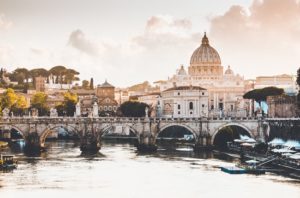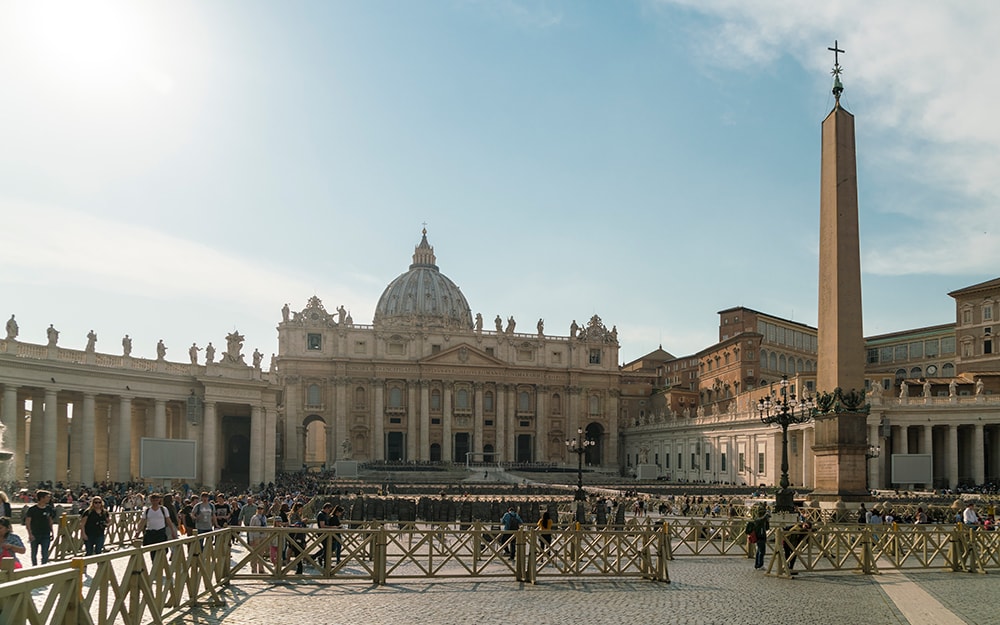Travel attractions and things to do in Rome, Italy 2025: St. Peter’s Basilica – Things to do in Vatican City? The St. Peter’s Basilica, or ‘Basilica di San Pietro in Vaticano’ is the spiritual centre of the Catholic Church and residence of the pope. The enormous basilica, located in the independent state of Vatican City and next to St Peter’s Square, was built on what is believed to be the grave of Peter. Saint Peter’s Basilica contains masterpieces such as Bernini’s baldachin and ‘La Pieta’ by Michelangelo, but you can also visit the crypts with 148 papal tombs. Plan your visit to St Peter’s well ahead, or you will likely be standing in line for a long time. Below Palazzo Valentini, next to the Forum of Trajan, are the remains of some Roman houses and baths. After a few days in the capital of Italy, you are probably tired of all the stones and archaeological excavations, which is why Domus Romane is highly recommended. The excavations are brought to life with the help of a tour with visual animations and effects. Discover even more details on things to do in Rome.
Walking through the forum, now in the middle of a throbbing modern city, is like stepping back two millennia into the heart of ancient Rome. Although what survives of this center of Roman life and government shows only a small fraction of its original splendor, the standing and fallen columns, its triumphal arches, and remains of its walls still impress, especially when you consider that for centuries, the history of the Forum was the history of the Roman Empire and of the western world. Roman political and religious life was centered here, along with the courts, markets, and meeting places.
 Free things to do in Rome : Partake of the Pantheon, Originally a pagan temple converted into a church in 608AD, the Pantheon is one of the important sites to visit in Rome. You’ll find it in Piazza della Rotonda, a favorite hang-out for young folks in the evening. It’s the best-preserved monument of imperial Rome, entirely rebuilt by the emperor Hadrian around AD 120 on the site of an earlier pantheon erected in 27 BC by Augustus’s general Agrippa. The building is open Monday through Saturday 8:30 a.m.- 7:30 p.m. and Sunday 9 a.m.- 6 p.m.
Free things to do in Rome : Partake of the Pantheon, Originally a pagan temple converted into a church in 608AD, the Pantheon is one of the important sites to visit in Rome. You’ll find it in Piazza della Rotonda, a favorite hang-out for young folks in the evening. It’s the best-preserved monument of imperial Rome, entirely rebuilt by the emperor Hadrian around AD 120 on the site of an earlier pantheon erected in 27 BC by Augustus’s general Agrippa. The building is open Monday through Saturday 8:30 a.m.- 7:30 p.m. and Sunday 9 a.m.- 6 p.m.
This stunning Baroque masterpiece is another unmissable stop in the Italian capital city. A ten-minute walk from the Spanish Steps, the Trevi Fountain as it stands today was completed in 1762, though it is said that the water source dates back to 19BC. You can see the fountain as part of this Free Walking Tour of Rome, during which you can take the chance to follow the tradition of throwing a coin into the water. According to legend, this act will ensure one’s return to the city! Piazza Navona is a must on this list of places to see in Rome. It’s considered one of the most beautiful squares in the capital of Italy—and the world! Full of bars and restaurants, this area is perfect for a break between monuments. Find even more info at https://lvtsk.com/.
Go on a Wine Tasting – Italy is a wine-lovers paradise. The biggest wine-producing country, and home to some of the finest wines on the planet, Italy’s capital city of Rome is as good a place as any to go on a wine tasting. Rome belongs to the region of Lazio, which is one of the most prominent wine-producing regions in Italy. However, as part of this Wine Tasting in Rome, you can taste glasses of fine red, rosé, white and sparkling from all over Italy, accompanied by an expert, English-speaking sommelier. What’s more, the wine is accompanied by delicious Italian snacks, including cured meats and cheeses from across the country.
Roman Forum – Located in the small valley between the Palatine and Capitoline Hills, The Roman Forum (or Forum Romanum in Latin) was for centuries the teeming heart of ancient Rome: the site of triumphal processions and elections, venue for public speeches, and nucleus of commercial affairs. The Forum today is a sprawling ruin of architectural fragments and includes the Arches of Septimius Severus and Titus, the Temple of Antoninus Pius and Faustina and the Temple of Saturn.
The Spanish Steps, The Spanish Steps connect Piazza di Spagna with Piazza Trinit? dei Monti, and are another excellent example of Baroque Roman architecture. They consist of 138 steps and were financed by a French diplomat who wanted to link the French Trinit? dei Monti church with the Spanish piazza below (so named for the Spanish Embassy to the Holy See). This area is a buzzing commercial center and attracted artists throughout the centuries – Giorgio de Chirico and John Keats had studios overlooking the piazza.
